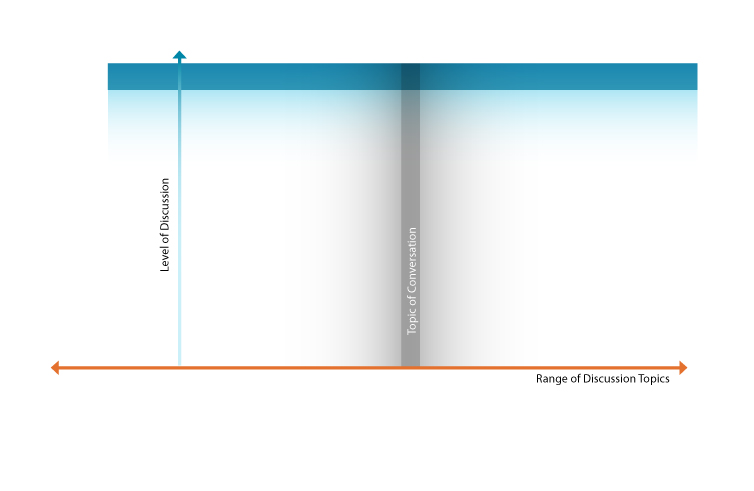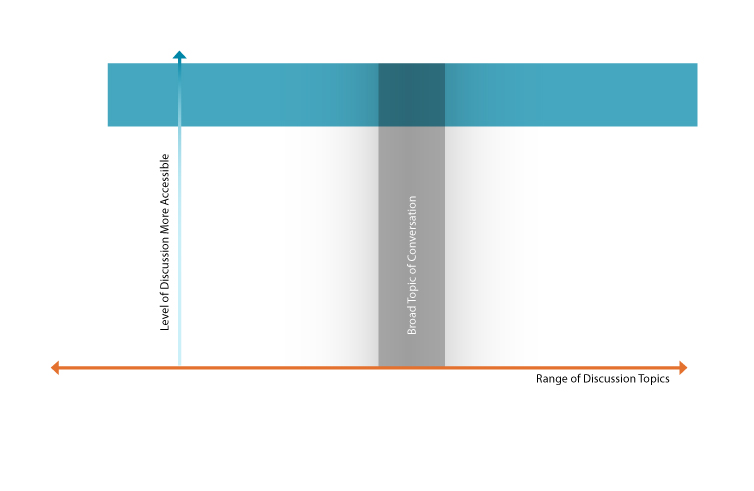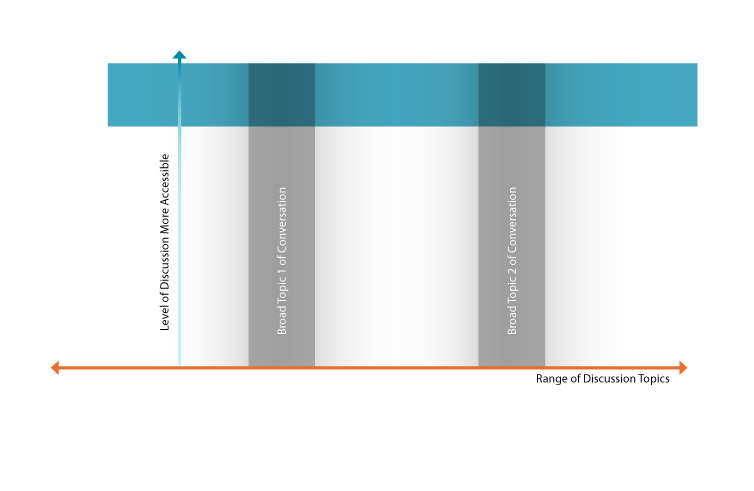How does one design a remarkable product? “Well, it depends on a product,” some would say. But couldn’t we say something general? Why do we feel passionate about some products but not others?
Consider conversations: some are fun, some are boring; some engage lots of people, some not so much; some result is heated exchanges, some are more neutral. Note that you can be very passionate about a topic, but don’t consider it fun: rape, genocide. Politics engages lots of people, but the details leave most bored. Some conversations generate sustained interest, and some fizzle out without a remark.
What’s required for a conversation to be remarkable? That depends on the audience. To be engaged in a discussion, you have to find the topic interesting to you. And what’s interesting to you, might not be to me. Thus the topic of conversation is a variable of the targeted audience.
Even if you find the topic amusing, you might not have the time to participate in the conversation. “I would love to talk to you about quantum space time, but the plane leaves in 5 minutes.” And it is so noisy on the plane that you can only hear every other word—environmental conditions are just not conducive for the conversation.
You find the topic fascinating and you have the whole evening to discuss it in a nice and comfortable surroundings of your living-room, but your background knowledge of the subject matter is rather limited—you don’t have the vocabulary to even follow the discussion! “The no-hair theorem states that, once it achieves a stable condition after formation, a black hole has only three independent physical properties: mass, charge, and angular momentum. Any two black holes that share the same values for these properties, or parameters, are indistinguishable according to classical (i.e. non-quantum) mechanics.”—Wikipedia entree on black holes. Or you might know a lot about the subject, but the conversation is in a wrong language. “В современной физике стандартной теорией гравитации, лучше всего подтверждённой экспериментально, является общая теория относительности (ОТО), уверенно предсказывающая возможность образования чёрных дыр, но их существование возможно и в рамках других (не всех) моделей (см.: Альтернативные теории гравитации).”—Russian entree in Wikipedia, discussing the standard gravitational theory.
You like the topic, you are well versed in it, and you have the time…but you hate the people! All that swearing and sweating… All things considered, you’d rather be doing something else with someone else. Company matters—that’s group composition.
So time and place are the environmental conditions—things have to be just so to create optimum conditions for engagement. Language and background knowledge are part of the user requirements—the minimum needed to engage the audience in a conversation. And finally, interest is key—you have to find the people interested in the topic.
If you’re designing the product/conversation, you can control only so much:
- make sure the audience is comfortable—this is about interaction and interface designs
- inform the audience about the topic—this is about interface and conceptual designs
- set the rules of engagement—this is about interaction and conceptual designs
- find people who are interested—this is about marketing!
To illustrate how these variables constrain the possible audience for a product/conversation, consider the graphs below. These were created to illustrate a talk about UCLAForum.com at ICC (International Criminal Court).

Notice that the “sweet spot” for targeted audience are only those that are interested in the topic and have enough expertise to discuss it—that’s a small area of intersection! (The gradients show falling off in interest and expertise.)
By expanding the discussion and lowering the bar on the required background knowledge, we can increase the “sweet spot.”
We can also attract more people to our product/discussion by expanding the possible number of conversations (uses).
The people in the “sweet spot” would find the conversation stimulating and interesting. All marketing efforts should be directed at getting them to the product! Note that these individuals come from a very small subset of the possible universe of users. But they will find the product remarkable—worth of the remark!
To hear an interesting discussion on designing for highly targeted audiences, please watch a TED Talk by Seth Godin: “Sliced Bread & Other Marketing Delights.”



Here’s a link to the post on UCLA Law Forum: http://www.interfaces.com/blog/2011/04/advancing-the-new-machine-ucla-law-forum-presentation/
I used the same ideas as above and applied them to an online criminal low forum.